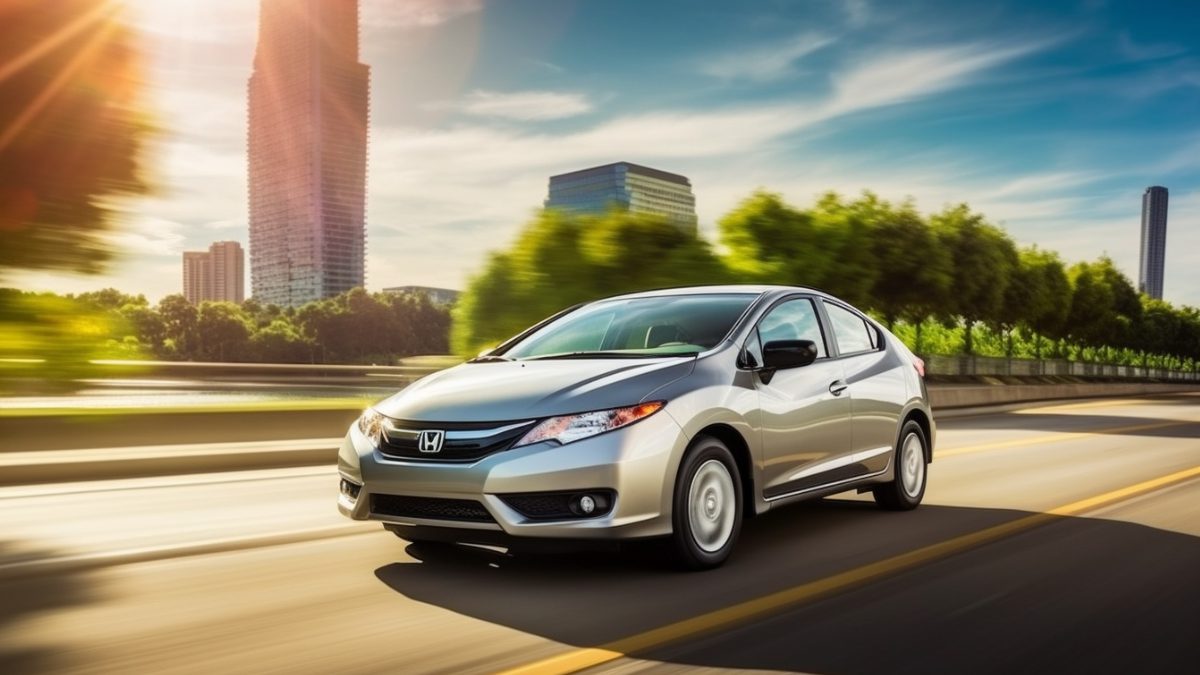Battery Light On But Alternator Is Charging – What Could Be The Problem?
The “battery light being on but alternator charging” issue can be perplexing for car owners. A faulty alternator is the most common cause of the battery light going out in most cases. However, in this case, the alternator is perfectly functional, but the battery light remains illuminated.
The causes of this issue include:
- Battery problems
- Corroded battery terminals
- Excessive accessory usage
- Faulty wiring
- A bad voltage regulator
- Loose battery clamps.
Understanding these root causes is crucial in diagnosing and resolving the problem effectively.
This article will go over the most common causes of the battery light to illuminate while your vehicle’s alternator continues to charge the battery. We will provide step-by-step solutions for each potential cause, as well as associated costs and preventative measures.
Causes Of Battery Light On But Alternator Is Charging
Now, let’s look more closely at what could be causing the “Battery Light On But Alternator Is Charging” problem. Understanding these underlying factors is critical for accurate diagnosis and effective resolution:
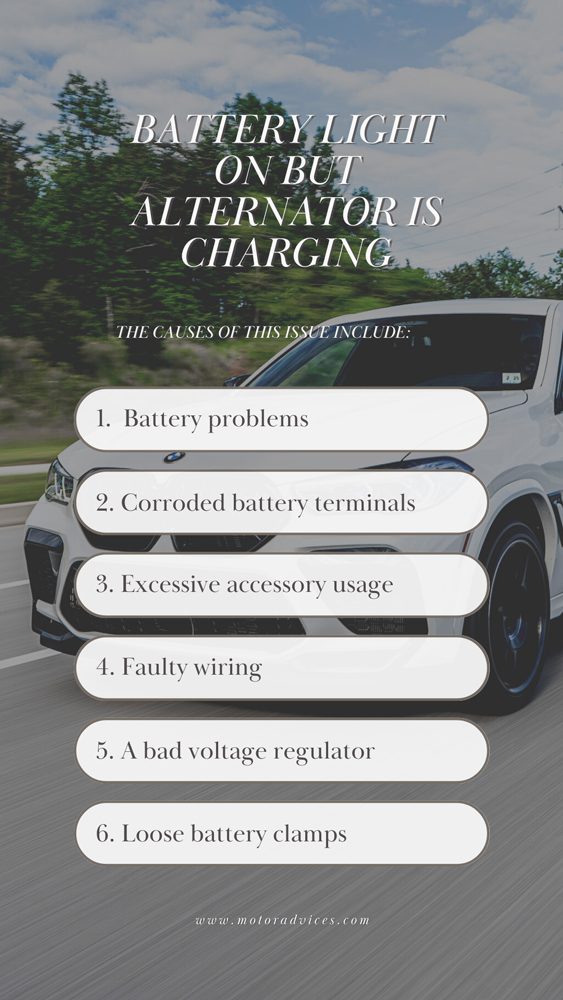
1. Battery Problems
One of the primary causes of this problem can be traced back to issues with the battery itself. A faulty battery can disrupt the charging process, resulting in the illumination of the battery light on your dashboard. Let us look into this issue further:
Causes:
- Battery Age: Over time, batteries naturally deteriorate and lose their ability to hold a charge effectively. This can result in a weak or dead battery that struggles to supply power to your vehicle’s electrical systems.
- Poor Maintenance: Neglecting regular battery maintenance, such as checking the water levels (for non-sealed batteries) can lead to premature battery failure.
- Extreme Temperatures: Harsh weather conditions, especially extreme heat or cold, can affect a battery’s performance and reduce its lifespan.
- Parasitic Drain: Even when the engine is turned off, some electrical components in your vehicle continue to draw power from the battery.
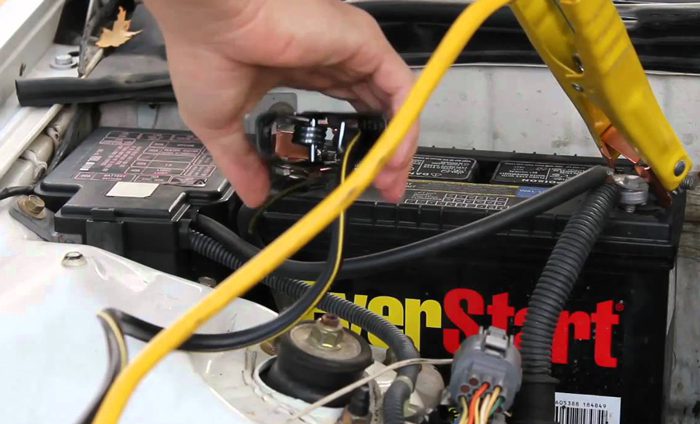
Symptoms of a Bad Battery:
- When you start your vehicle, if you notice that the headlights dim significantly, this could indicate a lack of power from the battery.
- A weak or dead battery may struggle to provide enough power to crank the engine, resulting in slow or sluggish starts.
- If your vehicle frequently needs to be jump-started, this is an indication that the battery is not holding a charge properly.
Diagnosis:
When the engine is turned off, use a multimeter to measure the voltage of your battery. A healthy battery should read around 12.6 volts. If it consistently reads lower, it’s most likely a faulty or dead battery.
Solution:
- Turn off the engine and engage the parking brake.
- Use a wrench or socket set to loosen and remove the nut or bolt securing the negative and positive cable from the terminals.
- Look for a battery hold-down clamp or bracket to keep the battery in place. With a wrench or socket set, remove any bolts or fasteners that are holding the battery in its tray. Once the battery is free, carefully lift it out of the tray.
- Place the new battery in the tray with the positive terminal on the same side as the old battery’s positive terminal. Make sure it sits securely.
- Reattach the positive and negative cables and the bracket.
- Turn on your vehicle’s headlights and try starting the engine to verify that the new battery is functioning correctly.
Cost:
The cost of a new battery can vary depending on the type and brand but typically ranges from $50 to $200.
2. Corroded Battery Terminals
Corrosion on the battery terminals interrupts the flow of electricity between the battery and the electrical system. This may result in a false indication of a charging issue. The most common cause of corrosion is prolonged exposure to moisture.
The symptoms of corroded battery terminals are the same as those of a bad battery. So let’s get right to the point.
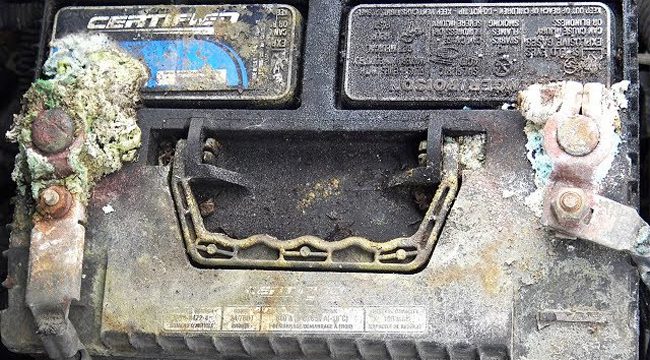
Solution:
- Locate the battery terminals; the positive terminal is usually red, and the negative terminal is black. Corrosion is frequently seen around the base of these terminals. It frequently appears as a white or greenish powdery substance around the terminals.
- Using a wrench or socket set, loosen and remove the nut or bolt securing the cable to the terminal. Gently wiggle the cable to detach it from the terminal.
- You can clean the terminals with a wire brush. Scrub the terminals and surrounding areas to remove the corrosion. Consider using a baking soda and water mixture to dissolve and neutralize more severe corrosion. After using the solution, thoroughly rinse with water.
- Once dry, reconnect the cables and apply a battery terminal corrosion inhibitor.
Cost:
Cleaning corroded battery terminals is cheap. You’ll need basic tools like a wrench or socket set, a wire brush, and possibly a corrosion inhibitor. These items should cost you no more than $10 to $20 in total.
3. Faulty Wiring
Faulty wires can cause various issues with your vehicle, and if this is the case, the battery light will be the least of your worries.
Symptoms of Faulty Wiring:
Inconsistent Electrical Behavior: You might notice that various electrical components behave erratically, such as lights flickering, power windows not working correctly, or gauges providing inaccurate readings.
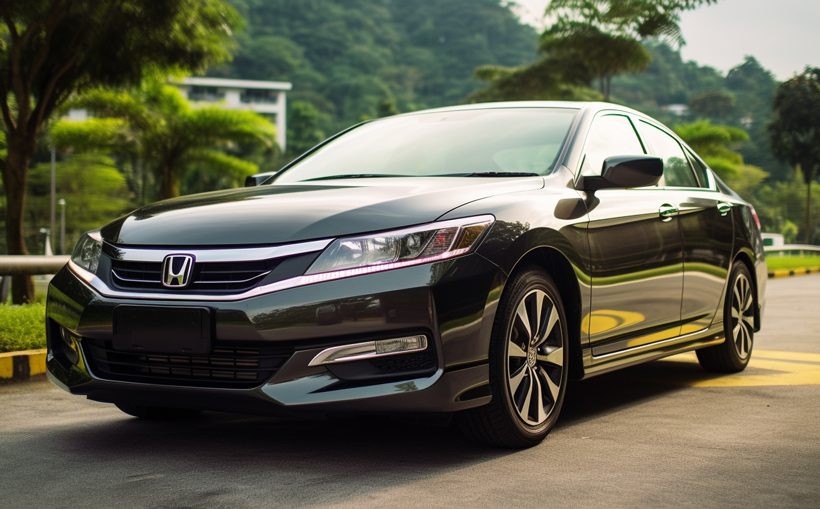
Solution:
- Locate the Faulty Wiring: Begin by identifying the precise wiring connection or harness that looks to be damaged or compromised. This may entail evaluating wires throughout the car, particularly in spots where they are exposed or where you’ve encountered electrical problems.
- Disconnect the Battery: Once you have identified the faulty wiring, the next step is to disconnect the vehicle’s battery.
- Repair or Replace Damaged Wiring: Depending on the extent of the damage, you have a few options:
- For minor damage, you can patch and insulate the affected area with electrical tape or heat-shrink tubing.
- If a wire is cut or severed, you may need to splice it back together using solder and heat-shrink tubing.
- In cases of extensive or irreparable damage, replacing the entire wiring harness or section may be necessary. This can be a more complex and costly repair which is best done by a professional.
- Reconnect the Battery: After making the necessary repairs, reconnect the vehicle’s battery.
Cost:
The cost of repairing faulty wiring can vary significantly depending on the extent of the damage. That is, whether you choose to patch, splice, solder, or replace wiring. Typically, the price ranges from $200-$1000.
4. Loose Battery Clamps
When these clamps are not securely fastened, they disrupt the electrical connection between the battery and the vehicle’s electrical system. This results in erratic electrical behavior and unwanted battery light.
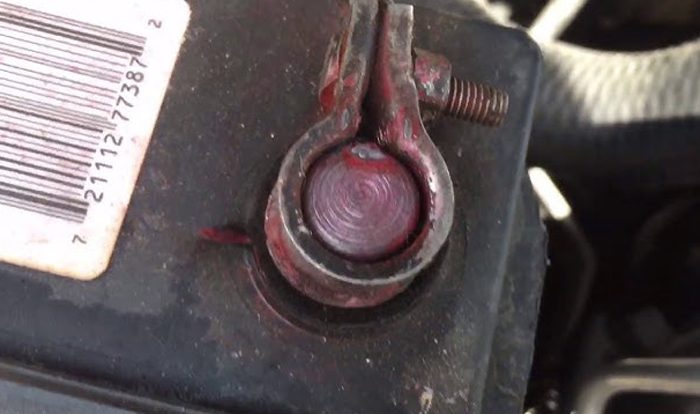
Solution:
If the clamps are loose, use a wrench or socket set to tighten them securely onto the battery terminals. Be sure not to overtighten, as this can damage the terminals.
5. Bad Voltage Regulator
The voltage regulator ensures that the alternator produces enough electrical voltage to charge the battery and power the vehicle’s electrical components. When the voltage regulator fails, the battery can be overcharged or undercharged, causing a variety of electrical problems.
Causes of a bad voltage regulator include wear and tear, heat, and electrical surges.
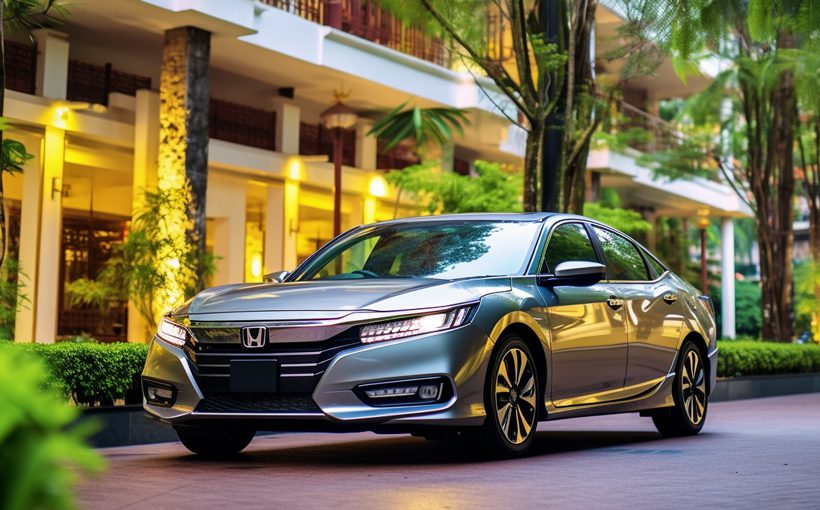
Diagnosis:
Depending on the make and model of your vehicle, you may need to remove the alternator to gain access to the voltage regulator. This usually entails removing the serpentine belt and then removing the alternator while it is still in place.
While the engine is running, use a multimeter to measure the voltage output from the alternator. It should typically read between 13.5 and 14.5 volts. If it’s significantly higher or lower, it could indicate a voltage regulator problem.
Solution:
- Once you have access to the voltage regulator, carefully disconnect the electrical wires from the old regulator and remove it from the alternator. Replace it with a new voltage regulator that matches your vehicle’s specifications.
- If you removed the alternator, reinstall it by following the reverse of the removal process. Ensure to properly tension the serpentine belt.
Cost:
On average, the replacement part itself can range from $80 to $100 while labor costs are around $200.
6. Too Many Accessories
Air conditioning systems, stereo systems, heated seats, GPS navigation, and other electrical accessories are standard features in modern vehicles. While these conveniences improve the driving experience, they also consume power from the alternator.
When too many accessories are used at the same time or for an extended period, they can overload the alternator’s capacity. This results in insufficient power to charge the battery and run the vehicle’s electrical systems properly.
Solution:
Identify and prioritize essential accessories, such as safety features, climate control, and lighting. Use them as needed and limit non-essential accessories when possible.
Here is a video that talks more about the battery light on but the alternator is charging
Preventative Measures
To safeguard against the recurrence of this issue, it’s essential to implement proactive measures and routine maintenance such as:
- Stick to regular maintenance schedules as they can help detect potential problems before they escalate.
- Avoid leaving electrical accessories running when the engine is turned off, as this can strain the battery and disrupt its charge.
- Periodically inspect wiring harnesses and connections for damage, loose wires, or corrosion. Address any issues promptly.
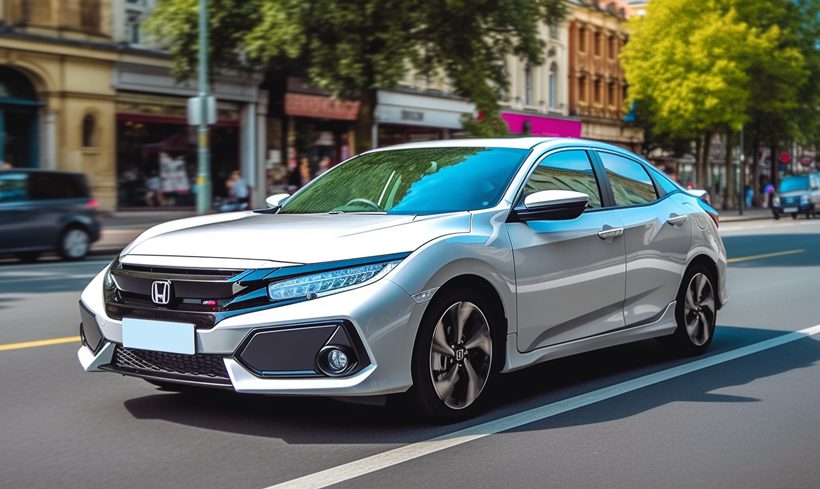
FAQs
Here are other related questions to why the battery light illuminates but alternator is charging.
It’s not advisable. The battery light can indicate various issues, some of which may lead to further damage if not addressed promptly. It’s best to pull over, turn off the engine, and call for assistance from a professional mechanic.
You can try a jump start, but it may not solve the underlying problem. If the problem is with the battery, a jump-start may work temporarily. However, if the problem is with the other components, it will not provide a long-term solution.
Yes, this is especially if a fuse protecting a circuit connected to the alternator, battery, or voltage regulator blows. It can disrupt the normal operation of these components. In such cases, addressing the blown fuse and resolving the underlying issue it protects may resolve the battery light problem.
Conclusion
The occurrence of the “Battery Light On But Alternator Is Charging” issue can be attributed to a number of underlying factors, including battery problems, corroded terminals, and faulty wiring. Identifying the root cause is critical for effective troubleshooting.
In addition, think about preventative measures to keep your vehicle’s electrical system running smoothly. Also, never drive while the vehicle’s battery light is illuminated. The reason for this is that you are essentially dealing with an unstable electrical system. As a result, there is no guarantee that your car will continue to run smoothly or restart if you turn it off.

